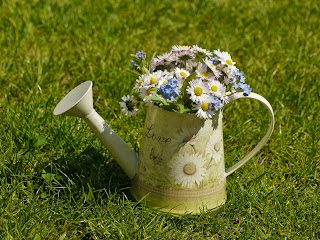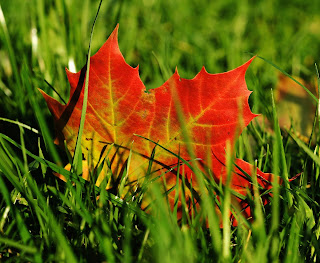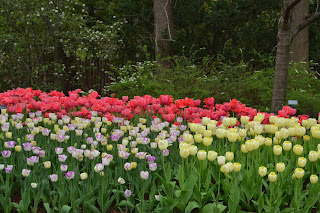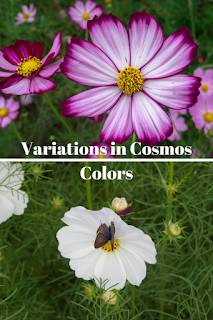Summertime is a great time to enjoy the great outdoors. Let's Review how to make that great outdoors colorful and attractive.
Everyone loves the warmth of the summer season and I'm no exception to that rule. What I enjoy even more is the colorfulness of the season. Everywhere you look there are yellows and reds, greens and oranges. Reds and purples falling together into a riot of color.
Whether you are gardening in your yard or on your balcony, annuals that add color are readily available to brighten up all of your spaces where ever they may be.
What is an Annual Flower?
Let's get our definitions right! Annual flowers are different than Perennials. The definition of an annual is:
"An annual plant is a plant that completes its life cycle, from germination to the production of seed, within one year, and then dies. Summer annuals germinate during spring or early summer and mature by autumn of the same year." *from Wikipedia.
10 of the Most Prolific Annual Bloomers
Now that we have the definition straight, we can look at those plants that give you the biggest return on color and length of bloom.
1. Geraniums
2. Snapdragons
3. Marigolds
4. Petunias
5. Lobelia
6. California Poppies
7. Cosmos
8. Four O'Clocks
9. Impatiens *
10. Begonias *
These are my top ten favorites but there are many more that I am very fond of as well. If I had to add another it would be Sweet Peas.
Let's learn some more about these choices!
Just For Your Information (FYI)
Geraniums come in a variety of colors from white, red, pink, coral and many shades in between, they are a bushy annual that you will find in almost every mixed planter. Why? Because they stand out with their flowers that are actually many small flowers on a single flower head. Cutting off the spent flowers will encourage the geranium to set more flowers all the time. It is a non-stop flowering annual.
Snapdragons like geraniums come in many colors and bi-colors too. Yellows, whites, pinks, oranges, reds, all of these colors are born on a stalk with many flowers on each stalk. Again if you cut them back they will re-bloom on new stalks.
Marigolds are a must have in the garden. They will do double duty flowering freely and at the same time encouraging the bees to pollinate your other plants. Marigolds are even planted close to patios and outdoor areas as the scent is supposed to keep mosquitos at bay. Marigolds come in light yellows, oranges, rusts, and can be short or tall depending on the variety that you plant. One thing is certain, once they start to bloom they will not stop. Dead-heading them is always a good idea. You can also save seeds from the spent flowers for next years plants.
Petunias are a favorite of many gardeners. They are not fussy plants and bloom non-stop. There are varieties of Petunias that you don't even have to do anything like dead-heading they are self-cleaning. Once they start to bloom you cannot stop them. Petunias come in a variety of colors from the deepest purples that look almost like black velvet, to the brightest whites in the garden. They also come in bi-colors which are really quite impressive. Red with white, Purple and white, Yellow and white are all combinations that are stunning. These are trailing plants that love to hang over the edge of a container or pot and will flourish with little more than watering when it's dry. By the time August rolls around, they sometimes get leggy looking, so give them a really good cutting back and a little fertilizer and they will start growing again like they were just planted.
Lobelia is another must have annual plant! These are small plants growing to a height of about 6 to 8 inches. They have little purple, dark blue or white flowers and are like a cloud of color just bursting out of a pot. Used mostly at the outer edges because it is rather shorter than most annuals, it will have a tendency to hang down over the pot edge giving your container a soft appearance.
California Poppies are just as pretty as little ballerinas in the garden. Perfect for fairy gardens their flowers look like Tutus. Again this plant comes in a variety of colors from white to yellow, pink and salmon, orange and red. Truly a pretty little annual that will bring you pleasure at all times. One flower fades and the next two are ready to burst forth. These are also easy to keep for their seed heads. Once they mature you can save those seeds to sow for 2018!
Cosmos Birds and butterflies just love this flower. Born high on stalks that can be up to 18 inches high, the sight of these pretty pink, white or puplish flowers are a sight for sore eyes. Bees, butterflies and lovely little finches will be visiting your garden on a regular basis. In the fall I would leave my Cosmos plants because the seeds are a natural attraction for the lovely little gold finches. In my zone 6 garden, I would not even have to plant these, the birds did it for me. They come out of the ground when it warms up, ready to bloom non-stop. I don't dead head these at all because all through the summer the birds are feasting on the seeds.
Four O'Clocks as their name implies start blooming later in the day. Early morning all the buds on your plants will be tightly closed, but as noon and beyond comes closer, the buds start to open. By mid afternoon there is a riot of color happening in your garden. These annuals come in a variety of colors as well. White, yellow, pinks, reds and more variations are abundant. I have some Four O'Clocks that are bicolored, hot pink with a red cross and they are almost Neon bright. There is no way to make these plants look less than fabulous.
Impatiens or Busy Lizzie as they are called colloquially, are great plants for shady spots in your garden. Sometimes it's hard to find an annual that will bloom in the shade. If your garden is shady, then Impatiens are the best shady flowering annual ever. They also come in a variety of colors and color combinations. Red, white, pink, purple, white with red stripes or red with white stripes, purple and white combinations and a whole host of others as well. If you are looking for a multicolored garden or you have a preference for a certain color, Busy Lizzies or impatiens are a great choice for you. They flower non-stop and are really easy to care for.
Begonias are another shady plant that will flower for you in the darkest corners of your garden. They are easy to care for and will flower from morning to night without too much coaxing. They come in shades of white, pinks and reds. Depending on the type of Begonia you buy they may be short or taller but never more than 12 inches in height. Used in hanging baskets as well they really are a pretty little flower that will keep you smiling all through the growing season.
Now I mentioned Sweet Peas only because I really love them. They are an annual but they are a climbing plant. So if you don't have space for a trellis on your balcony, I would not recommend these. If they do not climb, they are not nearly as pretty as when they are allowed to grow vertically. If you do have the space and the height, don't miss out on these very pretty and nicely scented flowers.
If you want to learn more about annual plants and their growing needs you can arm yourself with at least one of these books :
Not only will they help you with taking care of your annuals, but they may also spur you on to try something new and different for your garden this year or maybe for next year. A gardener always needs some good reference books and these are really good choices.
I hope that this lesson in non-stop flowering annuals has encouraged you to try your hand at growing some of them. Don't fret either because even though it is the end of June, you can still plant these flowers and they will give you a burst of color for the remainder of the growing season.
Note: The author may receive a commission from purchases made using links found in this article. “As an Amazon Associate, Ebay (EPN) and/or Esty (Awin) Affiliate, I (we) earn from qualifying purchases.”




















































